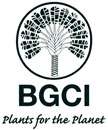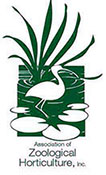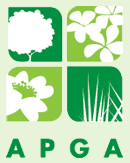

Why Buy Indonesian Plantation Teak products
The public may not be able to differ
between the use of teak from Burmese forests and teak from Indonesian
plantations - unless informed about it. The below facts might give some
perspective and assistance with arguments in the debate.
1. In Indonesia there is NO and has
NEVER been any wild growing teak.
2. The teak plantations were
established more than 200 years ago.
3. No natural forest has been cut to
extend the plantations for several decades.
4. The Indonesian government, through
the Forestry Department Perum Perhutani, owns and manages 3,2 million
acres of teak plantations. Apart from those there are many privately owned
plantations.
5. A boycott of teak from the
plantations in Indonesia would have dramatic, negative consequences:
a) The teak plantations would loose
their value and instead have to be clear-cut in order to give space to more
financially viable species � where the timber itself is not the end product.
b) That species would probably be
oil-palm - an environmental catastrophe according to all scientists and
environmental groups.
c) This would lead to an extinction of
the animal life that has established in the teak plantations through the year
hundreds.
d) Thousands of industries and
establishments, living on the teak plantations, would have to close down.
e) More than half a million (500.000)
people - family supporters - would loose their jobs.
f) Serious producers of teak products,
who actively work for a constant improvement on the sustainable plantation
management, would be damaged - possibly bankrupt - and prevented to proceed with
the long-term positive work.
g) A boycott of Indonesian teak does
NOT transform the plantations into rainforest.
6. There is a big difference between
cheap, fast grown, thinning timber � often used for teak furniture production -
and the teak specially selected for the marine industry.
7. The geographical location of the
teak forest/plantation is of no importance for the final teakwood product
quality. Careful and slow nursing, experienced selection and appropriate, simple
maintenance are the keys to a teakwood product that lasts for generations. This
is established by the Swedish Institute of Wood Science in Uppsala, Sweden.
8. Alternative, thermo-treated wood
becomes soft and porous when the "cement" (glucose & lignin) between the wood
cells are burnt away (the bacteria snacks) and continues to be an unsuitable
material.
9. Plastic and other artificial
materials as alternatives to teakwood are - with all chemicals included and
polluting, energy-consuming manufacturing processes - environmental catastrophes
in a comparison.
10. For an end-users practical parallel
wood/plastic - compare with seats in a car; real leather, or plastic that looks
like leather.
11. Active from the 12 of March 2008 it
is illegal in all European Community countries to buy and/or deal with any wood
originating from Burma/Myanmar.
12. Teakwood that officially comes from
"China", "Malaysia", "Thailand" or similar is smuggled from Burma/Myanmar and
illegally transhipped, because there is no large scale, industrial teak growing
in those countries.
13. EuroDesign Group is today the only
international manufacturer of teak products to the marine industry that only and
guaranteed uses Indonesian plantation teak.
14. Through proper documentation, every
delivery from EuroDesign can be tracked back to its place of origin in the
plantation where the trees were harvested and replaced with new plants.
15. From the 17 October 2008 and
onwards the European Commission has imposed all companies buying products made
of tropical wood to "seek sufficient guarantees that timber was harvested
legally".
16. Consumers/boat buyers should demand
from the dealer a fact-based reassurance about the origin of the wood - and that
environmental organisations and authorities should be able to check that
information.
17. In order to promote the survival of
the enormous teak plantations in Indonesia - you
SHOULD buy, rather
than to avoid.
Indonesian Teak Plantation
Perum Perhutani is a State owned enterprise managing State Forests in Java
and Madura on a commercial basis and with responsibility to implement concurrent
social welfare, economic and national development directives. Its fief is 2.5
million ha and includes 1.081 million ha of teak forest of which 0.837 million
ha is suitable for the clear felling harvest system. Management is through a
Board of Planning in each provincial level unit which sets an annual plan for
implementation by a Forest District manager. The reforestation programme
averages annually 10,000 ha, 8,000 of teak. Establishment is generally by
taungya, with farmer rights to 0.25 ha; elsewhere a contract system operates.
Direct seeding is employed and Leucaena interplanted. Intensive weeding
and thinning is applied; the rotation is 40-80 years. Annual production is
750,000 m3 teak log and 130,000 stacked meters of firewood. An
integrated wood industry converts to sawn timber, moulding and parquet. The
industry is supported by kilns, joinery and parquet plants. The market is
domestic and export, either by direct or contract sales. Teak improvement is in
progress in the selection of superior trees, and establishment of seedling and
clonal seed orchards. Teak improvement objectives include increased growth,
better stem form and branching habit and resistance to pests and disease. Rural
community development includes village uplifting and the enhancement of people�s
skill and a better quality of life.
INTRODUCTION
Perum Perhutani is an Indonesia State owned Forest Enterprise responsible for
management of the State owned forests in the islands of Java and Madura. As a
State owned enterprise, it is charged both with services for social welfare, and
for profitable operation based on business principles. To fulfill these tasks,
it has to produce goods and services suitable to meet the needs of people, and
to actively take part in carrying out and supporting the implementation of the
Government�s policies and programmes in the fields of economic and National
development. The enterprise conducts all activities from establishment of
plantations, stand maintenance, forest protection, harvesting, product
processing. Its philosophy includes maximizing the utilization of the forest,
sustainability of the forest resource and environment and increasing the welfare
of society, especially those living in, and nearby to the forest.
The working territory covers 2.5 million ha and is divided into units: Unit I
Central Java, Unit II East Java and Unit III West Java. According to its
function, the area is divided into 0.5 million ha protection forest, and the
other 2 ha million into production forest. The production forest includes
several species, each defined to particular areas. The area of teak, Tectona
grandis, plantation covers 1.081 million ha in which 0.837 million ha
suitable for the clear felling harvest system. This area of 0.837 million ha
includes some very old naturally regenerated teak forest and some mixed species
forest suitable for teak but not yet converted. The future clear felled
plantation reforested to teak may be in the order of 0.6 of the 0.8 million ha.
FOREST PLANNING
To achieve sustainable production, resource and environment control, forest
management operations based on several plans, are implemented through:
 | Forest development plans which deal with surveying, mapping, yield
regulation, road network planning and preparation of the sustained yield plan; |
 | Corporate plans that include potentials, inventory and evaluation,
SWOT analysis, goal projection, strategic setting and programme formulation to
implement the strategies; and |
 | Development plans aimed at short cut steps or measures to be taken
in attaining specified goals within a defined period of time. |
A Board of Planning in each Unit (Provincial level) has authority to define
the Management Plan (annually). This Plan is beyond the intervention level of
the Forest District manager - the executing agency. This is to guarantee and
maintain, sustainable forest resource production. A computerized forest resource
information system and Geo Information System of Arcinfo and llwis is being
established to facilitate better forest plans in the near future.
REFORESTATION PROGRAMME
The reforestation programme is to increase the productivity of the forest
land area. Reforestation is implemented in cut over forest and unproductive
areas such as bare and shrub land, or low stocked areas resulting from the
failure of earlier reforestation. The annual area under the reforestation
programme averages 10,000 ha - teak 8,000 ha and the rest other species.
The taungya system is widely applied in reforesting logged over areas. This
approach provides mutual benefit to both Perum Perhutani and society, wherein
local people are engaged as farmers with the right of growing staple food crops,
and the obligation to grow forest trees. Each farmer has rights to 0.25 ha of
land or 4 farmers per ha. The system provides an additional income of about
US$200-250 per year per farmer. Contract daily wage systems usually operate in
corridor or spot planting, labour are paid at the daily wage tariff. This latter
system is used in areas where it is impossible to apply the taungya system due
to absence of candidate farmers or to the physical terrain condition.
Direct seeding is applied in teak plantations at spacing of 3m � 1m. Rows of
the legume (Leucaena) are interplanted between teak rows to eliminate the
disadvantage of monoculture and to increase biodiversity, enrich the nitrogen
content of the soil, provide forage resource for animals and to establish a seed
stand for the next plantation programme.
MANAGEMENT - FOREST STAND TENDING AND THINNING
The purpose of these activities is to establish high value forest - both in
volume and quality - at attributes the end of the rotation age and to retain
soil fertility as well as environment.
Tending is required as successful teak plantations have specific environment
conditions, being intolerant both light and root competition. Activities include
weeding, pruning, thinning and protection against pests and diseases and from
destructive agents as grazing and fire.
Thinning is scheduled 5 times in the first twenty years and after that, every
10 years. The number of trees thinned is stipulated in Stand Tables. Tree
selection for retention has the principal objective of having the best quality
stand, and timber, by the end of the rotation.
HARVESTING
Harvesting is dominated by the logging operation and is oriented to labour
intensive systems, where as many as possible local people are employed within
the constraints implied in the forest business.
Girdling is applied two years before cutting. The rotation is 40-80 years
depending on the biophysical condition and on social factors. Annual production
is 750,000 m3 logs, 130,000 stacked meters of fuelwood (1m � 1m �
1m). Due to the very high value of teak a registration system has been developed
to facilitate a monitoring system of the whole range of products, and its effect
starts from the stump in the field and proceeds to the end user.
PROCESSING AND MARKETING
The integrated teak wood industries consist of sawmills, veneer plants,
kilns, moulding, joinery and parquet plants. One industry set is established in
Central Java and the other in East Java. The aim is to: create maximum added
value within the country, minimize waste, open employment opportunities, and to
stimulate the development of the surrounding area.
Marketing practices are aimed at both domestic and overseas end users. The
marketing system is managed through several systems as:
 | Large scale auctions to serve big timber companies. |
 | Small auctions to serve local people. |
 | Direct sales to serve persons and home industries. |
 | Contract based sales to serve certain agencies and industries. |
 | Exports through the Agency system in Europe, USA, east Asia, Australia and
Middle East countries. |
TREE IMPROVEMENT
A teak improvement programme was commenced in 1981 to improve the forest
potential. The objectives include: producing high value forest stands using
genetically superior seed, identifying the most suitable provenances for
particular areas, improving the genetic properties of trees with regard to
growth, stem form, branching and resistance to pests and diseases. Activities
cover selection of superior trees and the establishment of clonal and seedling
seed orchards to produce enhanced quality seed.
RURAL COMMUNITY DEVELOPMENT
This effort started in 1973 with its main objectives as people�s welfare and
a well managed forest which in turn gives a better quality life. In 1981 the
strategy and purpose became a more conceptual and planned oriented approach,
directed at the development of rural social welfare.
Since then more endeavor has been aimed at the biophysical improvement of the
villages, enhancement of skill of the people, and opportunity creation to the
local people to participate in forest development. Agroforestry is implemented
to increase the share of forest and forestry in the improvement of living of the
rural people in particular, and regional development in general. There are
supplementary activities to enhance the multiple use of forest land as
sericulture, beekeeping, recreation forest, wildlife breeding with support to
home and small scale industries.
![]()
![]()







